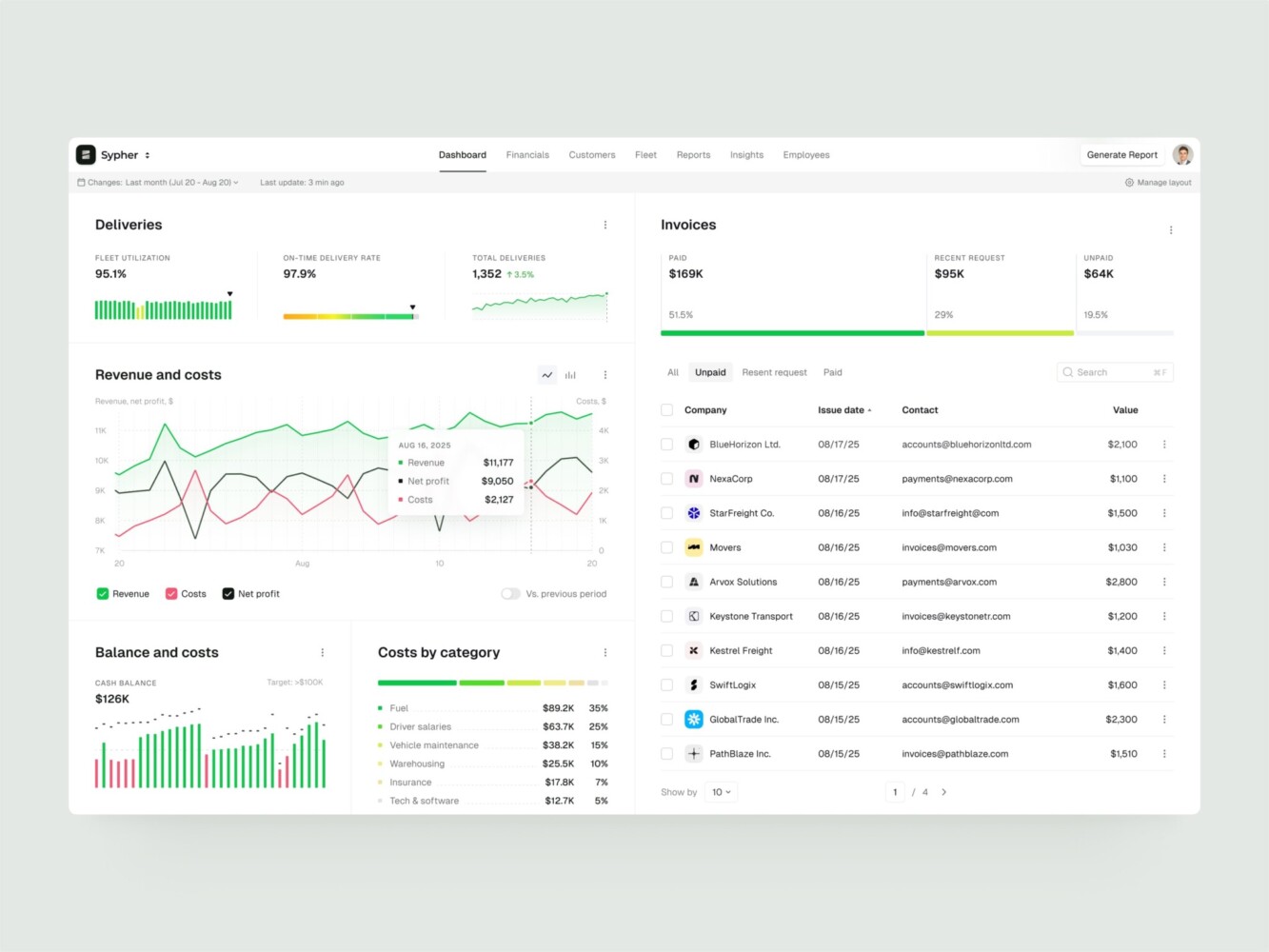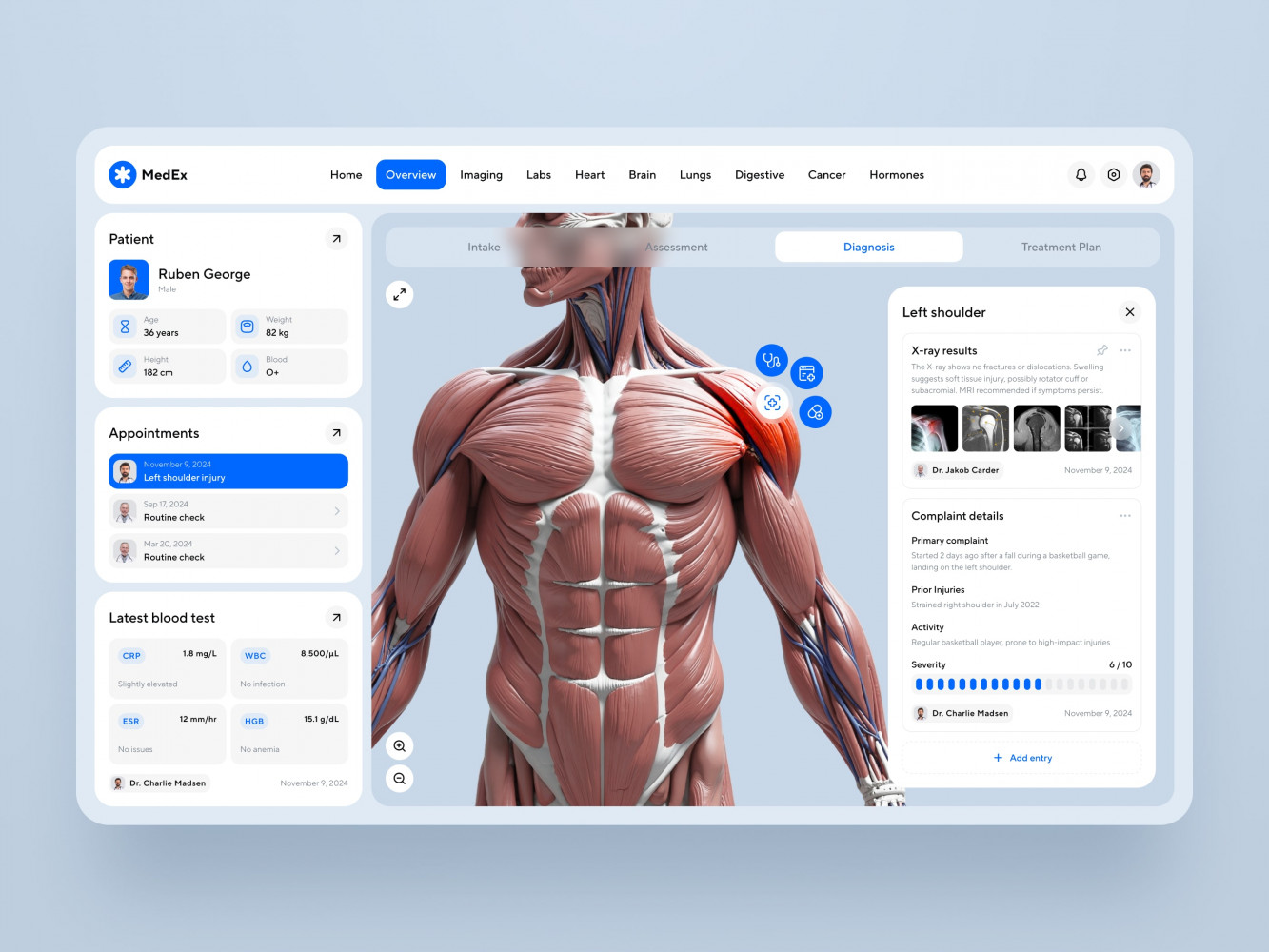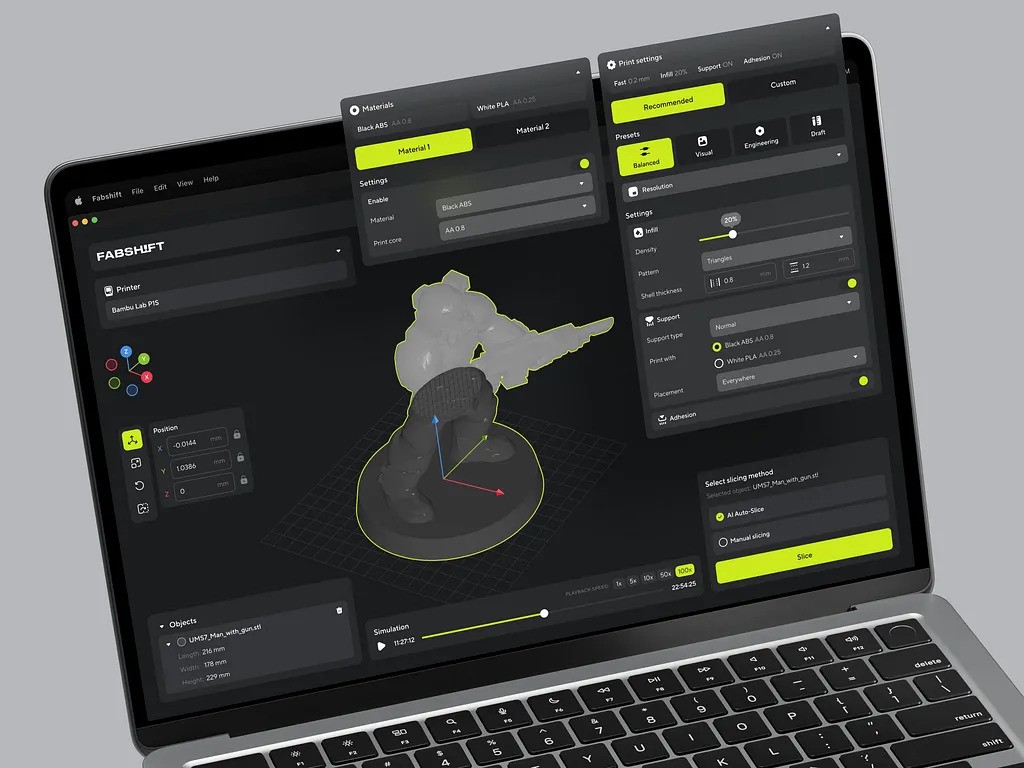About the author: Alex Chaly is a chief technology officer at Shakuro. A strategic leader and tech innovator who constantly searches for better tools and ways to set the team up for success.
Contents:
The thing I often hear as a CTO from product owners is that they’ve quickly built an app to bring value to users and expand the business, but now they can’t add a simple feature without breaking three other things. And part of this problem is usually the programming language they’ve picked in a hurry.
You see, choosing a programming language isn’t just a tech detail you hand off to your dev team and forget. You’re shaping how fast you can move, how easy it is to hire people, how stable your app stays under pressure, and even how much money you’ll burn in year two or three.
Your project needs something solid, something that won’t collapse when you finally get that burst of users or land your first big client. As Shakuro’s CTO, I’ve been searching for a tool like this for quite a long time. And in most cases, my team relies on C# development.
In short, it is still doing its job. The language plays nice with cloud platforms, like AWS or Azure, has been behind a ton of backend systems you use every day. It’s stable and fast, which means fewer bugs and late-night fixes.
Still, let’s talk about why, in my experience, this language could save you time, money, and a few gray hairs down the road. You’ll probably recognize a few of your own struggles along the way.
Why We Bet on C#
Why choose C# out of all programming languages? From what I’ve seen, people choose it simply because it works. And that’s why I’ve chosen it too in general. But I’ll explain the reasons in detail so you can better understand CTO technology decisions.
Unified Ecosystem Without a “Zoo”
This stack suits web services, desktop Windows apps, and the cloud. It is based on a single programming language and familiar instruments. For example, on the desktop, we use supported .NET technologies like WPF/Windows Forms or WinUI 3.
This choice helps us avoid multiplying unnecessary technologies, speeds up onboarding, and reduces the total cost of ownership. So development, operations, and support demand less because we reuse skills and infrastructure.
High Performance
For years, .NET has shown excellent results in independent benchmarks. For us, it’s about numbers. To cope with the same load level, you need fewer servers, which means savings without compromising stability. We measure latencies, watch the tails of distributions, plan resource budgets in advance, and do not chase the “records” the product does not need.
Predictability and Resilience
C# development has been around since 2000, and Microsoft hasn’t just left it sitting there. They’ve kept improving the language, especially with .NET going open-source and cross-platform. By the way, C# is well suited for long-lived systems. Strict language rules, a reliable ecosystem of proven libraries, and mature testing tools help catch errors earlier and prevent regressions.
Out-of-The-Box Tools
Visual Studio and extensions for VS Code cover the entire cycle: development, diagnostics, profiling, and deployment. At the same time, static analysis and AI assistants speed up routine work, but the final say rests with code review and production metrics.
Transparent Roadmap and Support
.NET has a fixed annual release timeframe, and stable versions are supported for a long time: LTS (3 years) and STS (2 years). We plan upgrades in advance: test, roll out in stages, and thus avoid creating night emergencies. The type the team picks depends on the project’s urgency and the client’s update policy.

Symbolik case by Shakuro
Benefits of C# Development
- Lowering the risks: With strict practices, battle-tested tools, and time-proven libraries, you face fewer issues in the production phase. Most of them are solved during the early stages.
- Development speed when scaling: The team works fast at the start, and later, when the project is scaling, it doesn’t hit the wall.
- Total cost of ownership: Thanks to high performance and cross-platform compatibility, you need less infrastructure and fewer unique skills, which are hard to replace.
- Long-term support: Microsoft releases updates on a predictable schedule and supports stable versions for a long time. This allows us to coordinate updates and migrations in advance, reducing the risk of emergency fixes and downtime.
- Pairs well with cloud and AI: The .NET ecosystem works with Kubernetes and well-known cloud providers. Integrations with AI services are quite a common practice.
Where C# Has Limits—And How We Handle Them
Despite all the advantages, enterprise C# development hits the wall in some cases. It’s not the best option in these situations; that’s why my team looks for other means of solving those tasks.
Fast-to-Market MVP
In fast iterations where you need a quick prototype that lasts for two weeks and then gets trashed, an “engineering” stack can be less suitable than fast scripting solutions. You waste money on unnecessary “engineering” when you need just a demo with only the key scenarios and no extra infrastructure.
In these cases, we have a lightweight build with minimum infrastructure. If there is a chance that the build will continue to live, the team creates a C# foundation to avoid rewriting everything from scratch in a month. We use ready-made modules: notifications, authorization, integrations with the database and mail servers.
Mobile Apps
Yeah, there’s Xamarin, and .NET MAUI now tries to do cross-platform mobile. But it’s just not quite there yet in terms of polish and ecosystem support. If you’re building a consumer-facing app where every animation matters and you need deep OS integration fast, most teams still lean toward native (Swift/Kotlin) or even React Native/Flutter.
Enterprise C# development won’t be a choice here, especially when you need that last 10% of performance or slick UI behavior.
When the Platform Sets the Rules
A platform can require special devices, drivers, and strict timing requirements, or SDKs that are inapplicable in the .NET architecture. Let’s be honest, C# won’t be an obvious choice here either. You can spend a lot of time finding alternative routes instead of focusing on the product.
In this case, we have to use what the platform demands. At the same time, we keep everything else, like business logic, on .NET to preserve a unified stack and avoid inflating support costs.

Enterprise Resource Planning B2B SaaS Dashboard by Conceptzilla
How We Use It in Practice
Now I’ll explain how we leverage the benefits of C# development in practice.
Build Architecture For the Task, Not Trends
The team avoids complicating architecture without necessity. The developers analyze scale, pace of change, and budget and, depending on the info, choose the type:
- a modular monolith for a fast start and straightforward maintenance;
- several separated services when there are clear boundaries of responsibility;
- a full microservices architecture when independent releases and separate scaling are a must.
The result is predictable timelines and a clear growth trajectory without rewriting the code, which can be costly.
Focus on Performance
We plan acceptable response latencies up front and design the system to handle load in different conditions. For example, heavy work is moved to the background. As a result, you need fewer servers to handle the same load levels, and peak periods pass without degradation. It is crucial for business software development with C#, where the infrastructure should not outgrow the business itself.
Controlled Upgrades and Reliable Dependencies
While working, we rely on supported .NET versions and libraries with transparent histories. There is a strict update schedule: agreement on a maintenance window, testing, and rolling it out gradually. The team follows it. Such an approach reduces the chances of unexpected downtimes. What’s more, it lowers the total cost of ownership. And makes releases boring, in a good way.
Cloud-Neutral Approach and Delivery Automation
My CTO technology decisions for building processes are centered around automated build and delivery (CI/CD), containers (Docker), and orchestration (Kubernetes). The architecture is not tied to a single provider because the team works in Azure as well as other clouds and private clusters. To accelerate launch, our devs sometimes opt for starter-kit-level tools, like Microsoft Aspire.
In the end, when using C# for enterprise applications, we have portability between environments, rapid releases, and infrastructure cost control.
Flexibility in Time and Budget
The plan and schedule are quite flexible, and we often adapt them to various limitations. For instance, we can offer a full scope and a lighter version with pre-agreed simplifications. It is faster and cheaper in critical aspects, without losing key user value.
As for the simplifications, none of them changes the key user scenario. They only let us ship to production faster and prove value:
- The team can start with the minimum set of scenarios users pay for. The rest gets fixed in the roadmap and placed for the second and third releases.
- We connect one priority external service that covers 70–80% of the need. Other sources and synchronizations are implemented after confirming value and getting initial metrics.
- Instead of a heavy custom UI, we leverage a ready-made component library and system patterns. Branding and complex animations go to the next stage, and the scenario does not suffer.
- We deploy to one selected cloud, with basic monitoring and backups.

Medical Practice Management Software Dashboard Design by Shakuro
Lessons Learned from Real Projects
Workflow is one thing, and real cases are another. Here are a couple of real cases from Shakuro’s portfolio where C# development helped us overcome the challenges and deliver good results.
Case 1: Launch Paid Subscriptions & Provide “Live” Updates
The platform we worked on needed to quickly launch paid subscriptions for authors, provide users with single sign-on, and ensure “live” updates. At the same time, it should not be tied to a single backend or provider.
Issue: Fragmented integrations (payments, email, chats) and different brand and organization requirements.
Solution: To solve all these issues, the team assembled a “skeleton” of independent services on .NET. For instance, we integrated Stripe for subscription payments and single sign-on with Keycloak.
Result: The platform went to market with paid subscriptions and “live” notifications. When switching providers, there was no need to rework the core. Single sign-on reduced support costs and simplified scaling across brands and regions. At the same time, communications and payments scaled independently, while the architecture remained cloud-neutral.
Case 2: Process Events & Connect New Providers Effortlessly
For this project, we needed to accept events from various sources, process them reliably, and connect new providers without pain.
Issue: Heterogeneous formats and frequencies, duplicates and losses during network failures, where each new source turned into a mini-project.
Solution: We assembled an extensible framework with different packages using enterprise C# development. The team also created unified contracts, reliable processing, and vendor neutrality, where storages and providers are swappable in place.
Result: Connecting new providers became a predictable procedure. We stopped the event loss and solved incidents faster because the entire event chain was visible. The team saved time: the devs just reused the framework instead of writing integrations from scratch. And the budget stayed flexible, because the client could launch “core + key providers” and expand as needed.
Case 3: Migrate from File-Based Exchange & Create a Bridge Between Systems
The customer had two legacy Windows apps that managed metrics and events in the agriculture sector. They exchanged data via XML files in shared folders, which caused delays, duplication, difficult diagnostics, and process hangs when file sharing failed.
The goal was to migrate from file-based exchange to HTTP, create two-way request–response delivery, and make processing asynchronous and resilient to overloads. At the same time, the logic should stay the same and have compatibility with current XML formats.
Issue: There were some challenges as well, like on-prem infrastructure, strict security policy, and old platform versions on the systems’ side. A minimal downtime window.
Solution: Using C# development, we placed a lightweight bridge between the systems—a separate service that runs alongside the applications and takes over all data exchange. All without touching the apps. The legacy apps still produced and consumed XML, but via reliable HTTP requests.
Result: The devs removed the file-based exchange from the middle and replaced it with a managed bridge service. For the client, the solution had practical value: fewer failures, greater transparency, and readiness for future integrations without risking the core systems.

3D Printing Service App by Shakuro
Conclusion: The Case for C# Development
As a CTO, I strive to set the team and the business up for steady, scalable growth without burning through cash on avoidable rewrites or midnight outages.
C# just gets that. It does its job and stays strong under pressure. For business apps, reliability, maintainability, and clear structure matter more than hacker news clout.
Yeah, it’s got limits. You won’t build your next viral mobile game with it. But what about SaaS platforms, internal tools, transaction systems, and APIs that keep a business running? It’s solid.
I’ve backed enterprise C# development in various companies and scaled products with it. Never once regretted having it as a backbone. So if you’re building something real, meant to last and grow, maybe give it another look. Not because I said so, but because stability, speed, and sanity are worth more than hype.
